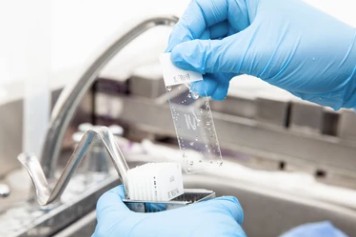 MEET US AT PLANT BIOLOGY 2024 June 22-26, 2024 Honolulu, Hl #309Learn More
MEET US AT PLANT BIOLOGY 2024 June 22-26, 2024 Honolulu, Hl #309Learn More
In cell suspension culture, by measuring the viability of cultured cells and cell clusters, we can effectively understand the growth and viability of cells. Before protoplast culture, it is often necessary to measure the activity of protoplasts to understand the quality of the prepared protoplasts.

The methods used for the determination of cell (or protoplast) viability include: fluorescein diacetate (FDA) assay, triphenyltetrazolium oxygen reduction assay, Evans blue staining assay, neutral red (NR) assay, MTT assay, XTT method, trypan blue (TB) assay, etc. Hemocytometers were used to observe under a microscope, and the cell viability was expressed as the percentage of the number of living cells in the total number of observations.
FDA itself is non-fluorescent and non-polar, and can freely penetrate the plasma membrane into the interior of the cell. After entering the cell, it is hydrolyzed by esterase in living cells to produce a fluorescent polar substance - fluorescein, which cannot freely enter and exit the plasma membrane. Therefore, under a fluorescence microscope, cells with fluorescence can be observed, indicating that the cell is an active cell. Conversely, cells that do not exhibit fluorescence are nonviable cells. The specific operation steps are as follows:
Cell Viability = Number of Living Cells / Total Number of Observed Cells x 100%
Note: Cells containing chlorophyll may emit yellow-green fluorescence instead of green fluorescence due to the interference of chlorophyll. Non-viable cells emit red fluorescence.
Viable cells (or protoplasts) can be used to determine the viability of cells because the dehydrogenase in the cells reduces the light yellow MTT to the blue-purple compound formazane. MTT has good solubility in water, while formazane is insoluble in water, but easily soluble in organic solvents such as ethanol, isopropanol, and dimethyl sulfoxide (DMSO). The absorbance value can be measured by a porous plate spectrophotometer (microplate reader) according to the color depth. Since the amount of formazane produced is directly proportional to the number of living cells reacting, the absorbance value can reflect the number and degree of activity of living cells.
Cell Viability = Number of Cells Showing Blue-Purple / Total Number of Observed Cells x 100%
Viable cells (or protoplasts) reduce 2,3,4-triphenyl tetrazolium chloride (TTC) to red due to the activity of oxidoreductase, and the viability of the cells can be determined accordingly. Generally, the number of red cells in the field of view can be observed under a microscope, and the percentage of living cells can be calculated. The red substance can also be extracted with ethyl acetate, and the light absorption value can be measured at 520 nm with a spectrophotometer to calculate the relative viability of the cells.
Cell Viability = Number of Red Cells / Total Number of Observed Cells X 100%
Viable cells (or protoplasts) have the characteristic of selectively absorbing foreign substances. When treated with a stain, living cells reject the entry of the stain and therefore do not acquire the color. Dead cells can absorb a large amount of dye and become stained. By counting the number of unstained cells, its viability can be calculated. The specific operation steps are as follows:
Cell Viability = Number of Unstained Cells / Total Number of Observed Cells X 100%
The method for viability determination of plant cells can also be used for viability determination of protoplasts. For the determination of cell or protoplast viability, one method can be selected, or several viability determination methods can be used at the same time, and then the results can be compared.